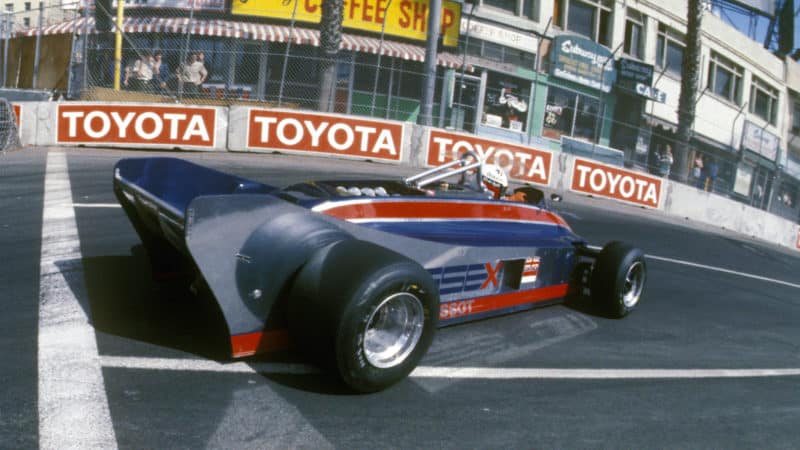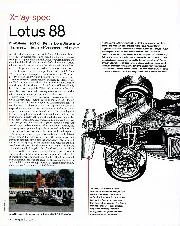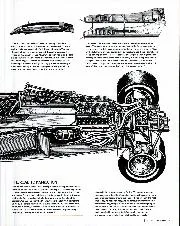With the banning of sliding side-skirts the side-plates of the aerodynamic chassis were set to give the regulation 6 centimetres ground clearance when stationary. This is when the trouble started. It was pretty obvious that at speed the downforce created by the air-flow over and under the aerodynamic chassis was going to press the whole of the bodywork downwards compressing the four mounting springs sufficiently to make them become coil-bound, and thus become solid, then all the down-force was going to be transmitted directly, unsprung, to the wheel uprights, and thus to the tyres, which is the basic object of using down-force. Meanwhile, the mechanical chassis, carrying the driver, engine, gearbox etc, could remain static within the bodywork, until dynamic or road conditions caused the main suspension to work. Since 1970 all aerodynamic effects have had to transmit their down-force to the tyres through the entirely sprung parts of the car, which is to say that aerofoils and fins are not allowed to be attached directly to the wheel uprights.
Entirely sprung parts of the car was interpreted as meaning the chassis, though in a Formula One car these days it is not easy to say what the chassis is, with the engine being a major structural part of the whole car. Chapman said the Lotus 88 had two chassis, the aerodynamic one, which he called the first chassis and the mechanical one which he called the second chassis, but the opposition would not accept that and insisted that it was illegal to transmit the aerodynamic down-force directly to the wheel uprights. There was a lot of confusion over the interpretation of the rules when it came to defining the word chassis, for no-one was quite sure whether the word was meant to be singular or plural, it being the same word in both cases. Most people thought it meant singular, but there was no valid reason to suppose this.

Confusion reigned over the car’s legality
Then the Lotus 88 was attacked on Article 274/3 “Coachwork and Dimensions”, Rule 7 which specifies that any part of the car influencing its aerodynamic performance must be rigidly secured to the entire sprung part of the car and must remain immobile in relation to the vehicle. No-one had defined what the entirely sprung part of the car was, nor had they defined what the vehicle was in the second part. Confusion reigned at Long Beach, again in Brazil and also in Argentina and a lot of people were protesting, some on the principles involved, some on word details, some against the mis-management by officials and scrutineers, some on Rule 7 Art. 3, others on aerodynamics acting directly on the wheel uprights. It is important to realise that none of this was involved with dodging the skirt-ban ruling, even though many journalists did not seem to realise this. Meanwhile Gordon Murray of Brabham was deliberately dodging the skirt-ban rule with his hydro-pneumatic suspension, but there was so much flak over the Lotus 88 that many people missed this fact.





